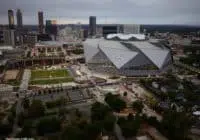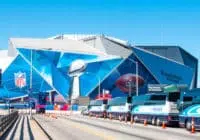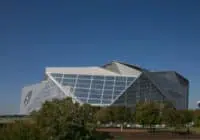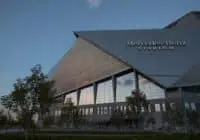Super Bowl LIII Traffic Management and Transportation Planning Playbook
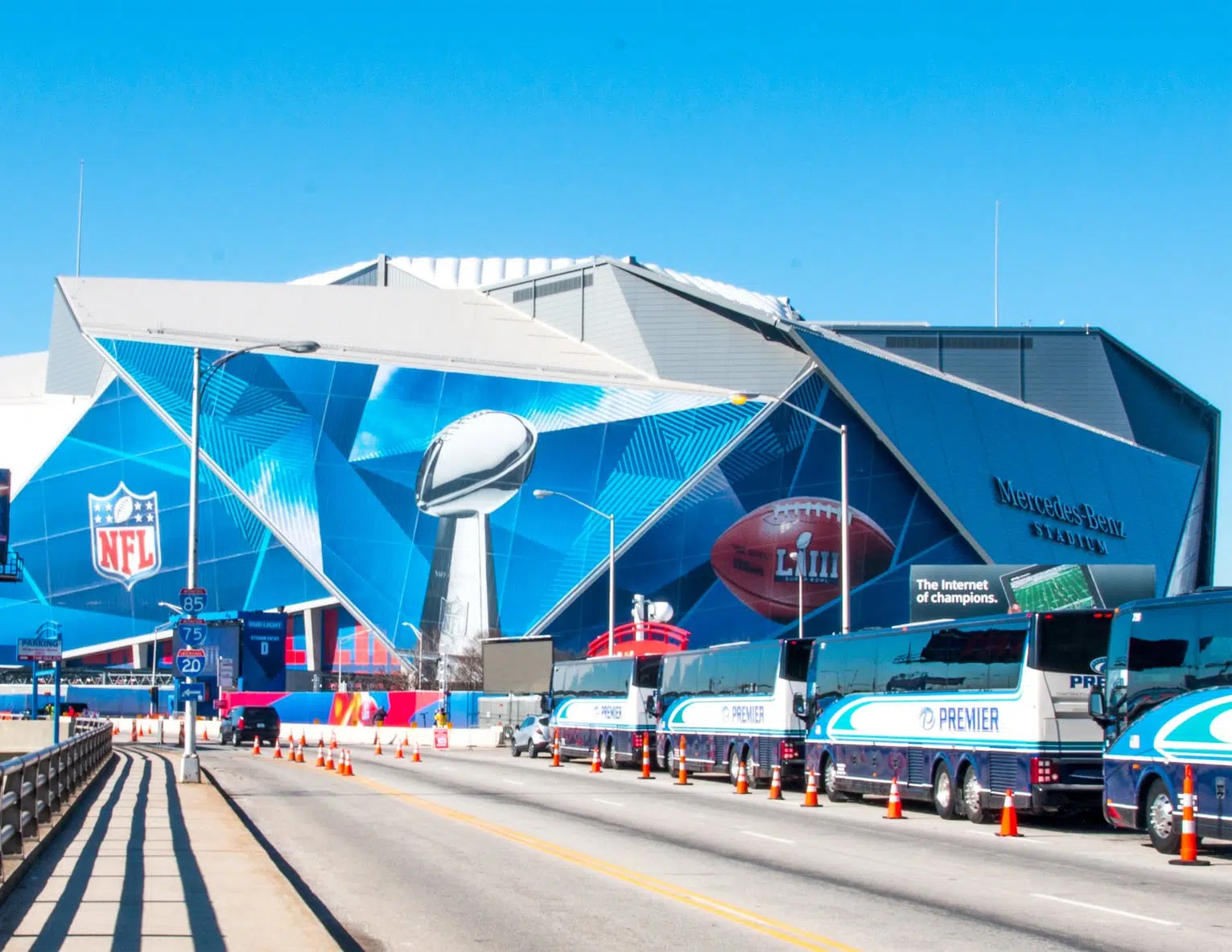
Kimley-Horn was selected by the Atlanta Super Bowl Host Committee to provide traffic management and transportation planning support for Super Bowl LIII at Mercedes-Benz Stadium.
Designing Safer Super Bowl Traffic Patterns
Through open connections, active engagement, and efficient real-world planning, Kimley-Horn and project partners developed game-changing operations for one of the largest and most challenging events in Atlanta’s history. The goal of the design phase was to successfully orchestrate traffic operations for Super Bowl LIII and the days leading up to it across three of Downtown Atlanta’s largest events venues: Mercedes-Benz Stadium, State Farm Arena, and the Georgia World Congress Center.
Kimley-Horn coordinated transportation planning efforts among multiple partners, including the Super Bowl Host Committee, NFL transport and event management consultants, Georgia Department of Transportation (GDOT), Georgia World Congress Center, Atlanta Police Department (APD), and the City of Atlanta. To facilitate effective collaboration, clear and concise real-time communication was paramount not only to avoid traffic catastrophes, but also to help ensure the safety of more than one million attendees and personnel.
Kimley-Horn maintained all road closures related to Super Bowl LIII within the Waze smartphone app. The team also developed “Know Before You Go” maps for media use and the Super Bowl website, enabled Dynamic Message Signs (DMS) to inform drivers of changing route patterns, and coordinated rideshare drop-off and pick-up locations with Lyft, the official rideshare service of Mercedes-Benz Stadium. Kimley-Horn and GDOT optimized operations between GDOT’s Transportation Management Center and officers on the ground, developing special event signal timing plans that shouldered the bulk of traffic operations, allowing the traffic officers to focus on vehicle/pedestrian safety instead of manual traffic control.
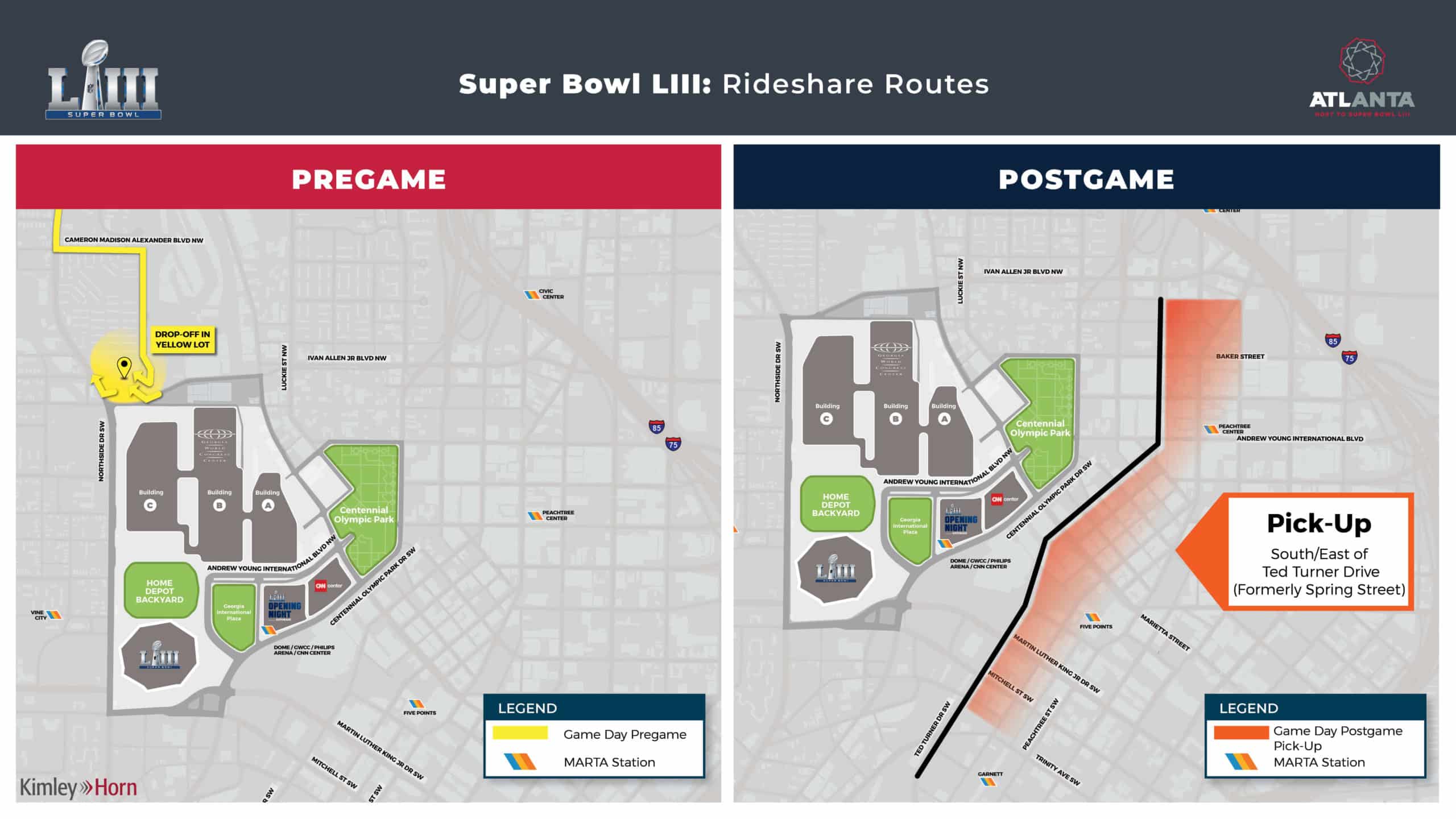
Collaborative and Strategic Traffic Management Planning
With the overall event strategy focusing on traffic management and monitoring, clear and succinct communication, and thorough documentation, Kimley-Horn and GDOT collaborated to reroute traffic with specific plans for event ingress, interim, and egress. More than ten major corridors and intersections were given pattern changes from one-way to two-way streets, contraflowed, or metered beginning two hours before kickoff on Super Bowl Sunday. Through signal timing enhancements, CCTV camera upgrades, and police guidance, the team at the GDOT TMC innovatively cycled through comprehensive Special Event Action Sets tailored to large-scale event traffic operations.
Coordinating with the Waze team, Kimley-Horn’s transportation engineers incorporated Time Based Turn Restrictions (TBTRs) into the Waze algorithms for the event. Rather than showing restricted or closed movements on the app, the TBTRs forced the algorithm to route traffic to a different path and allow a more efficient circulation flush. With public safety as the primary concern, these modifications to the Waze platform helped to ensure drivers were aware of the updated routes and traffic flow.
Overcoming Game Day Obstacles
Reducing Pedestrian and Vehicular Conflict
The ten days leading up the event include a myriad of well-attended experiences which attract droves of pedestrians and a surge of vehicles, creating several challenges for traffic management. With public safety in mind, a key component of Kimley-Horn and GDOT’s Intelligent Transportation System deployment included programming for time-of-day pedestrian scrambles, designed for all-way pedestrian crossings during heavy volume times that could be controlled directly from GDOT’s Transportation Management Center (TMC). With each signal synchronized to “walk” for an extended period, open intersections were flooded with moving pedestrians when foot traffic was at its peak. The scrambles also allowed vehicles to pass through intersections easily during the “don’t walk” phase, as pedestrians were only allowed to cross during the scrambles, minimizing vehicle and pedestrian conflicts and congestion.
In the past, most intersections with heavy pedestrian crossings required at least six police officers to manage the crowd and vehicles; with the updated signal timing and TMC control, an intersection could be managed by just two officers.
Rolling Out The Green Carpet: Safely Transporting NFL Teams and VIPs
Transporting NFL team cheerleaders, members of the media, high-profile celebrities and VIPs—not to mention the coaches and players of the two competing teams—required a clear path as well. Engineers at GDOT worked directly with the NFL and police departments to develop and implement preemption traffic signal timing plans along the major NFL transport routes, clearing out congestion ahead of the bus movements and enhancing the safety of police escorts, vehicles, and pedestrians along the corridors.
This signal timing application was dubbed The Green Carpet and was rolled out to the NFL’s transportation team, efficiently facilitating the safe movement of hundreds of buses and black cars on Super Bowl Sunday. When it was time for movement, police escorts radioed traffic engineers and upwards of a dozen traffic signals were controlled by preprogrammed action sets to provide green signals for the duration of the escorted group’s travels. The Green Carpet not only decreased travel times, but also improved safety for all users by maximizing the use of traffic signal technology and minimizing police overriding traffic operations.
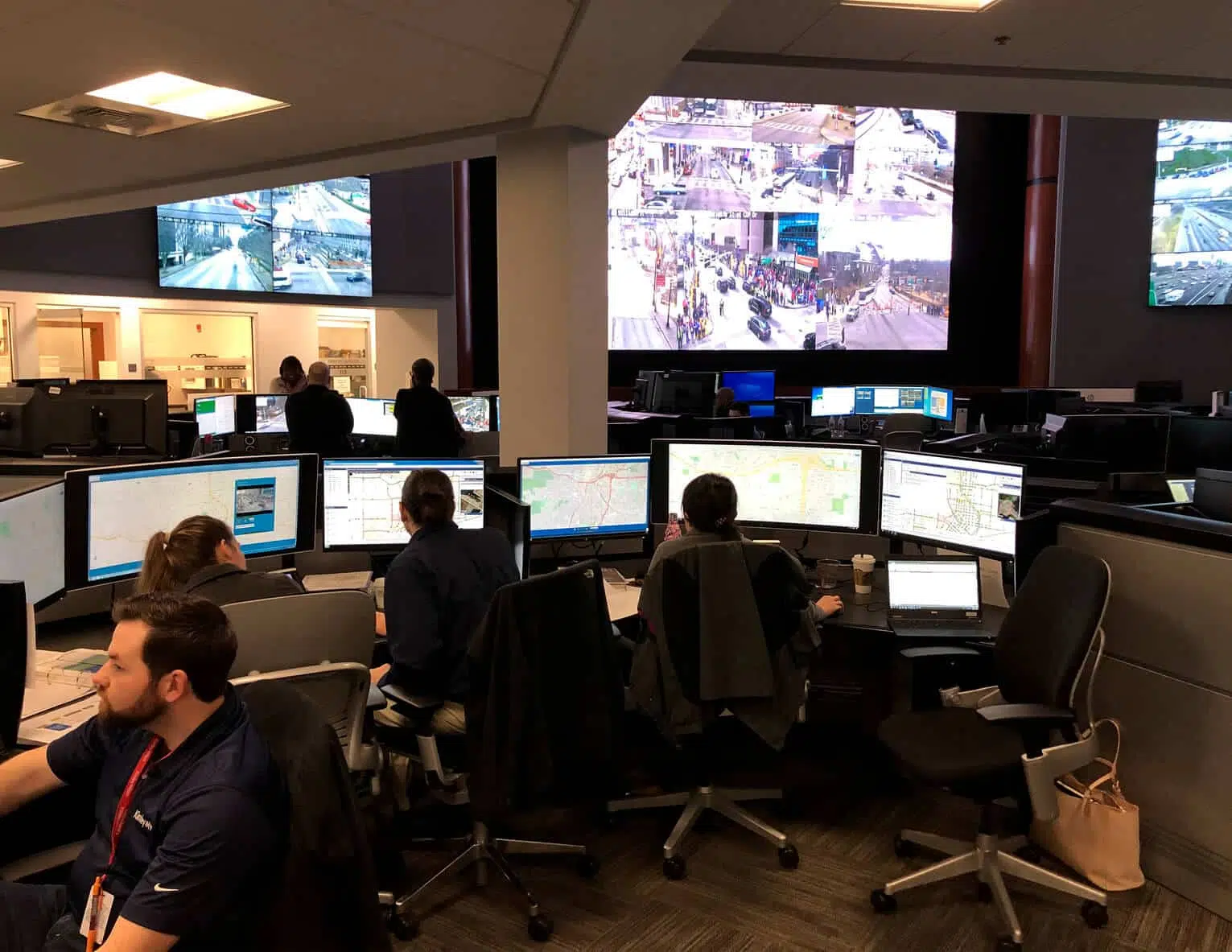
Coordinating Super Bowl Traffic for the Atlanta Community
Kimley-Horn partnered with the Host Committee and APD to reach out to the surrounding neighborhoods and develop traffic control plans that minimized impacts to residents. Innovative techniques such as coordinating with Waze and deploying The Green Carpet reduced travel times for all users of the transportation system, which produced economic savings through delay reductions and reduced fuel consumption and motor vehicle emissions.
Given the success of this traffic management program for one of largest and most challenging events in Atlanta’s history, the Playbook has proven to be an invaluable resource for managing any future downtown Atlanta event while also minimizing impacts to the surrounding communities.
Project Recognition
- 2020 Engineering Excellence Grand Award; ACEC Georgia
- 2020 National Recognition Award; ACEC

